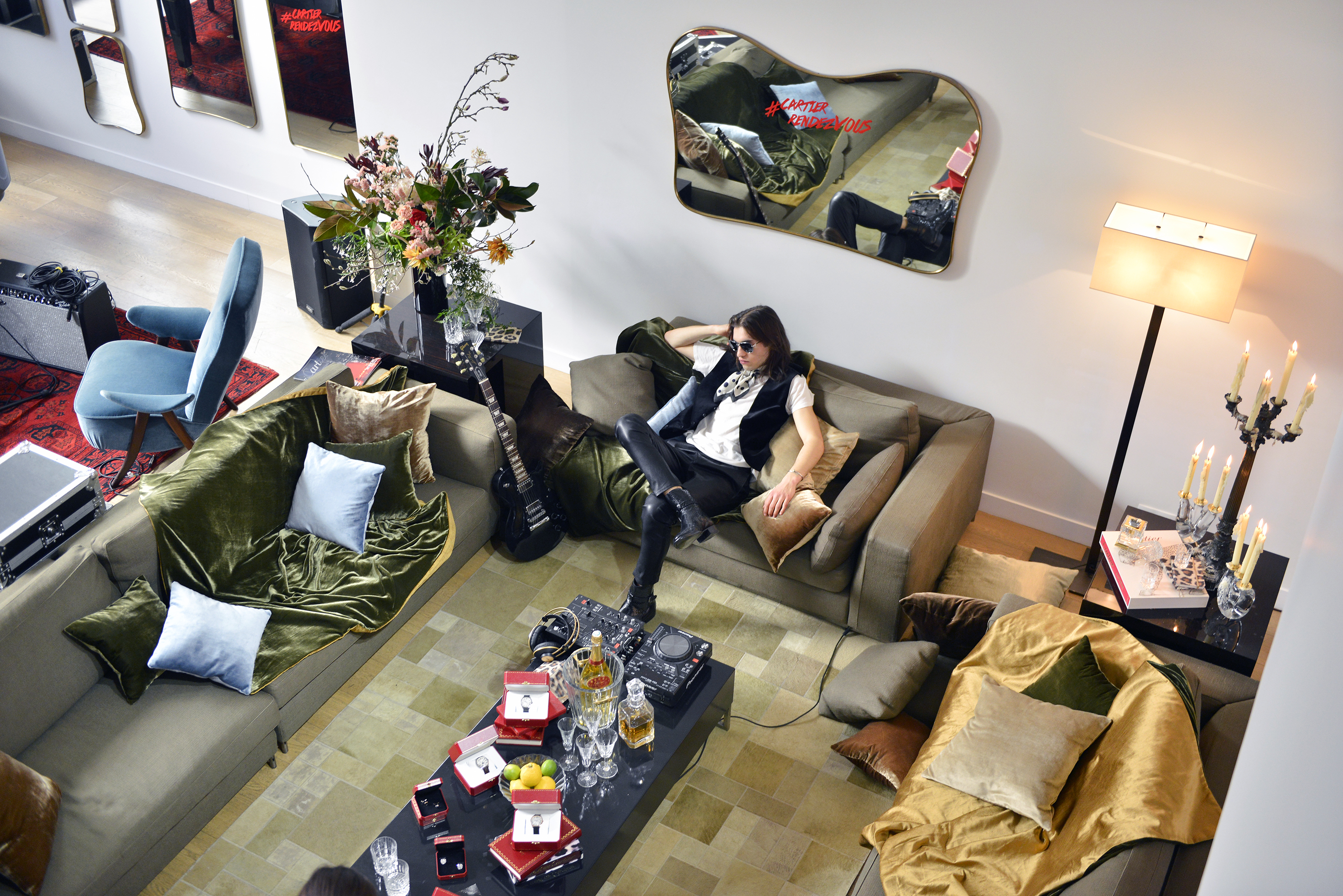
A decade ago, the Fondation Cartier pour l’art contemporain in Paris presented “Rock’n’Roll 39-59,” a groundbreaking exhibition that retraced the genesis of rock and roll in the United States through photography, ephemera, and other documents from the hip-shaking genre’s early years.
On March 2, Cartier, the luxury brand that owns the Parisian art center, paid a tribute to that seminal exhibition with a show of its own to debut Cartier’s new spring 2017 collection of jewelry, watches, and accessories, unveiling this finery in a theatrical mise-en-scène inspired by the ambiance and accouterments of rock’s golden days.
With Paris Fashion Week underway, Cartier held its day-long product launch for the international press in a loft-style apartment at the Hôtel de Pourtalès, which was itself staged to resemble a music recording studio, complete with a grand piano, percussion instruments, and electric guitars in a luxuriously untidy living room.
“The idea was to recreate a makeshift studio where one could imagine a rock band playing and recording music,” according to a brand representative.
A view of the installation. Courtesy Cartier
In the vast apartment, Cartier displayed—in a scenography reminiscent of the 1970s—a selection of “strategic products” that included its new line of Drive watches, strewn around on a coffee table covered with Polaroid photographs of models wearing Cartier accessories. A grouping of Panthère de Cartier watches—an updated version of the coveted 1983 vintage model—was propped up on rods amid the piano’s strings. The Cactus jewelry line, first introduced last year, was augmented this season with rings, bracelets, necklaces inspired by a cactus-flower motif, and two bejeweled alligator-skin handbags, all displayed on a dining table around a central cactus-themed flower arrangement.
Upstairs, a musician’s dressing room was recreated with stage costumes, while a diva’s dresser overflowed with gifts in Cartier’s signature red jewelry box. There, Cartier showed its new Ecrou pieces along with novelties from the stripped down Juste un Clou collection, both inspired by designer Aldo Cipullo’s audacious designs for Cartier from the 1970s, in motifs perhaps more readily associated today with the punk movement than classic rock and roll. (The Juste un Clou pieces are literally “just a nail,” made from precious metals and curved into wearable ornaments.) Still, in Cartier’s luxe rock-star universe, even the champagne bore a Cartier label.
The fantasy diva’s dressing room. Courtesy Cartier
The event, titled “Cartier Rendez-Vous,” was the third such presentations by the luxury brand during the biannual Parisian prêt-à-porter shows. Last September, the display was held in the private apartment of an art collector with the furniture packed up in boxes and crates, awaiting movers. Before that, it was staged at the Montana, a trendy boutique hotel on the Left Bank where each suite was the scene of a different fantasy scenario.
The Hôtel de Pourtalès, where Cartier’s latest rendez-vous took place, is what the French would call “une adresse confidentielle.” Unknown even to most Parisians, the historic hotel particulier is nestled just behind the Madeleine Church, on the rue Tronchet. Barely visible from the street, it operates as a high-end yet very discreet hotel-apartment that made news last October when it was revealed to be site of a robbery at gunpoint involving Kim Kardashian by a group of masked assailants who made off with several millions in jewelry.
Jewelry on display in the setting. Courtesy Cartier
Still, it was a suitably chic and off-the-beaten-track venue for Cartier to show the full scale of its know-how and the mastery of all the métiers that the brand assembles under its roof, namely watchmakers, jewelry setters, leather makers, and others.
This was also a remarkable show of the capital outlay that Cartier—a brand owned by the Richemont Group—can deploy to position itself apart from the competition. By creating a parallel reality that immerses the visitor in the world of Cartier, the brand captures the imagination by creating the kind of visual imagery well suited for the Instagram generation, but also with its unique approach to packaging luxury where the experience is central, and the product an accessory.